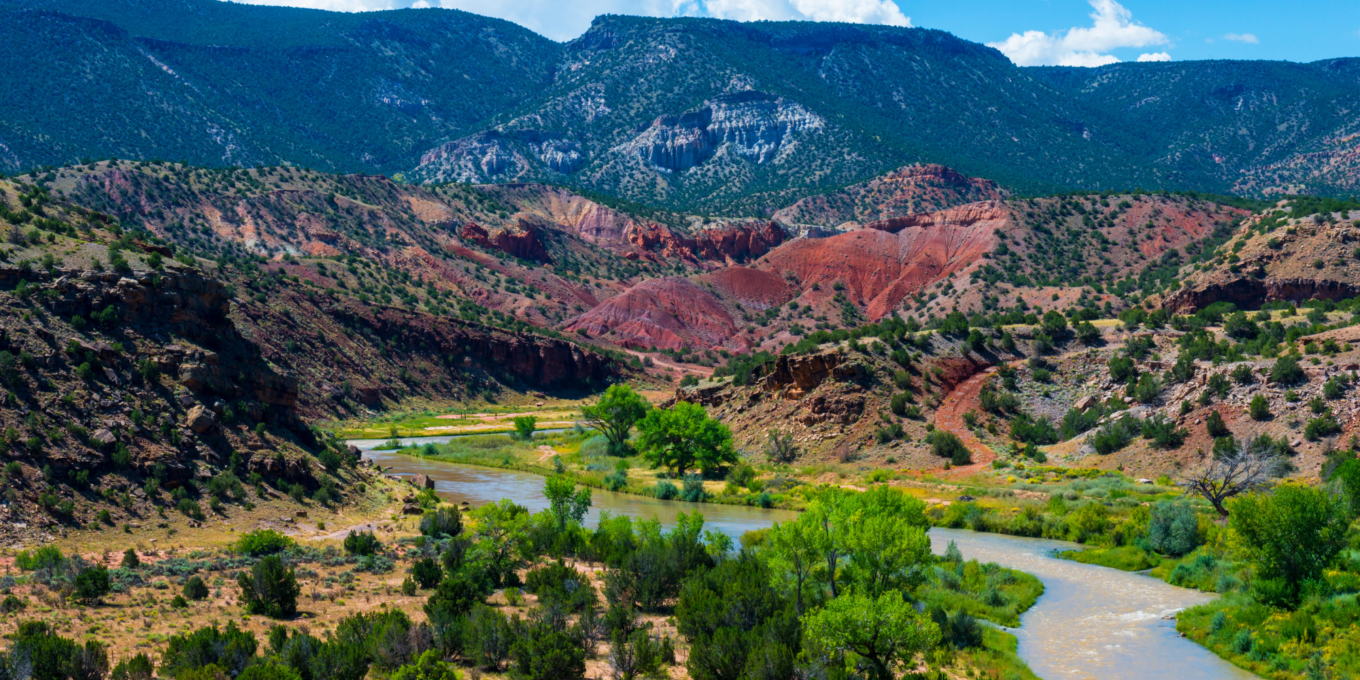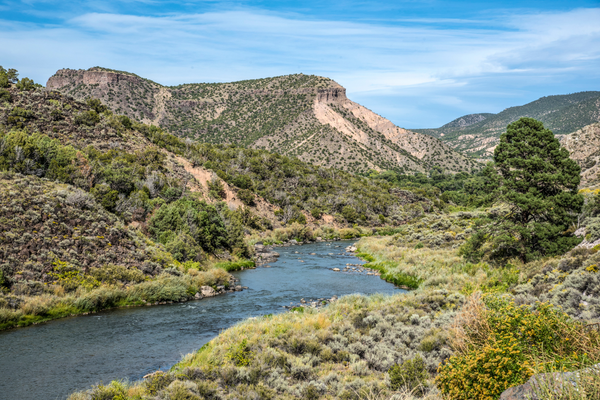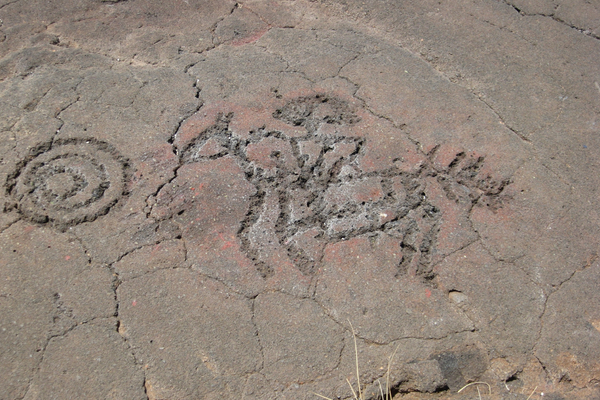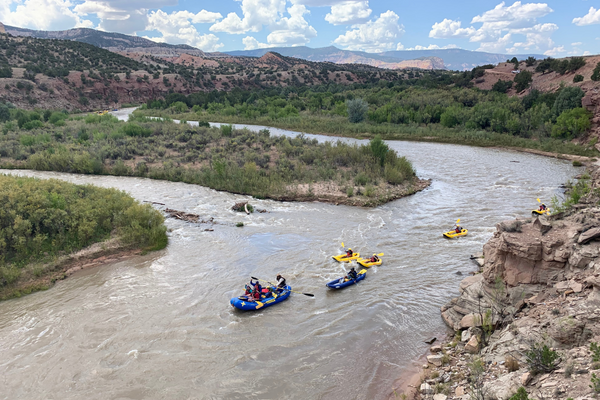Rio Grande Racecourse Half Day
$60 Child

Did you know our headquarters are located on ancestral Puebloan lands that have been inhabited for over 10,000 years? At NMRA, we strive to educate our guests on this rich Indigenous history, as all our river trips float through historically significant areas where petroglyphs and other markers of ancient human settlements can be found. We can’t wait to show you around the Upper Rio Grande Valley!
This history informs the contemporary cultural landscape of New Mexico, where 19 different sovereign Pueblo nations are found, 8 of which are located within 50 miles of our headquarters. The Early Spanish conquistadores called the various Indigenous communities that they encountered “Pueblos,” which translates to “people” or “towns” in Spanish. So, although the Indigenous nations in New Mexico are all called “Pueblos,” each of these communities have different traditions and speak different languages depending on the regions in which they reside.

If you keep your eyes peeled while you float down the Rio Grande, symbols may begin to emerge from the dark basalt boulders lining the riverbank. Snakes, lizards and human figures are among the depictions that decorate the banks and provide a glimpse into the ways of the ancient Pueblo communities that lived along the river valley tens of thousands of years ago. The petroglyphs found in the areas surrounding our headquarters and on our Rio Grande trips are largely from three different time periods. There are petroglyphs from the Archaic Period, the Ancestral Pueblo period (1300 – 1600 A.D.) and from the period following European contact. The Rio Grande was a vital life force for these civilizations, just as it continues to be today for us here at NMRA, and for the many different communities that live, farm, work and play along the river from Colorado to Texas.

There are a variety of local oral histories and archaeological theories that attempt to pinpoint the migration patterns and the historical timeline of the earliest human inhabitants of this river valley. The six Tewa-speaking Pueblos that are located along the Rio Grande between Taos and Santa Fe, have the same origin stories. It goes as follows:
“The origin traditions begin with how the Tewa emerged into the world in the distant north. The place is Sandy Place Lake, thought to be located in southern Colorado. Soon after emergence, the Tewa were split into two people, the Summer and Winter People, and were sent to opposite places on the landscape and tasked with finding the “middle place,” or the locations of their eventual historic villages. The Summer People traveled along the western side of the Rio Grande eating fruits, and the Winter People journeyed along the eastern side eating deer and elk. On their travels southward the people stopped twelve times, and these stops are represented as ancient villages. Eventually the two peoples came together in the Rio Grande valley …” (Duwe and Cruz 2019).
As this origin story and the numerous petroglyphs found along the Rio Grande suggests, the valley that we float through on all of our Rio Grande rafting is both incredibly scenic and uniquely significant to the many different populations that call this region home. Once the Tewa people encountered the Rio Grande Valley, they began farming and establishing their villages in the area. Unlike other nomadic tribes that would move around seasonally or as food reserves fluctuated, the Tewa people have resided in the same region since they first arrived. This is one of the reasons that the Taos Pueblo is one of the longest continually inhabited communities in the United States.
After you get off the river with us and you’re inspired to explore more of the petroglyph-rich mesas of Northern New Mexico, be sure to plan a tour with the Mesa Prieta Petroglyph Project. Located just 20 miles south of our headquarters, Mesa Prieta is home to over 100,000 petroglyphs and numerous other formations of great archaeological significance.
Book a trip with New Mexico River Adventures on the Rio Grande River! Whether you are looking for exhilarating class IV rapids or a scenic and relaxing float, we’ll point out the petroglyphs along the way.

Rio Grande Racecourse Half Day
Rio Grande Gorge Rafting Full Day